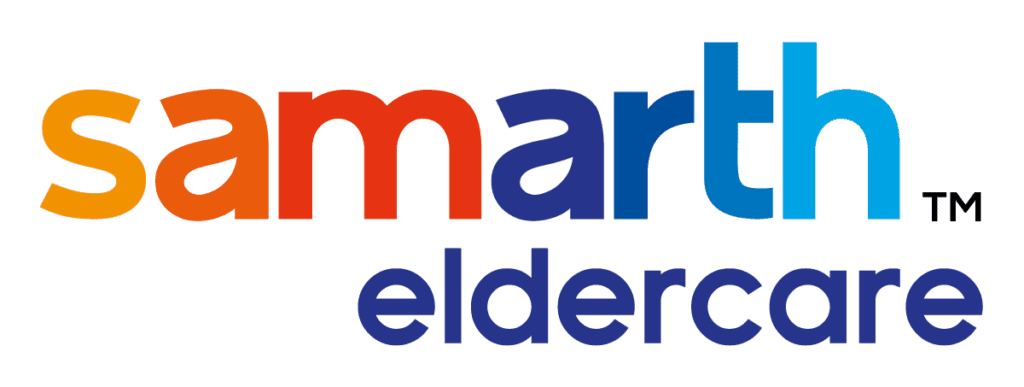In today’s fast-paced world, the importance of elder care cannot be overstated, especially for those who live miles away from their aging loved ones. Technology tools for elder care and senior care technology have emerged as game-changers, offering peace of mind to distant family members.
Innovations like telehealth and wearable devices ensure that seniors receive the care and monitoring they need, bridging the gap between heart and home. Samarth Elder Care stands at the forefront of this revolution, integrating these technologies to enhance the lives of the elderly.
This blog dives into how these advancements are reshaping elder care, making it more accessible, efficient, and, importantly, more connected than ever before.
Understanding the Need for Technology in Elder Care
The demographic landscape is shifting globally, with a significant increase in the elderly population. This change brings to light the growing necessity for technology tools for elder care and technology for senior care, especially as chronic conditions become more prevalent and the logistics of caregiving from a distance present new challenges.
- Rising Elderly Population: By 2024, individuals aged 65 and over are expected to outnumber those under 15, signaling a pivotal demographic shift. This trend underscores the urgent need for technology to help seniors live independently, ensuring their safety and well-being without compromising their autonomy.
- Chronic Conditions on the Rise: Studies reveal that around 75% of the elderly in India suffer from chronic diseases, with a quarter living with co-morbid conditions. Similarly, in the United States, the adult population with chronic diseases is projected to significantly increase, with those aged 50 and older expected to see a 99.5% increase in chronic disease prevalence by 2050. These statistics highlight the critical role of technology in managing health care for the aging population.
- Long-Distance Caregiving Challenges: With families often spread across countries or continents, the logistical hurdles of caregiving from afar become more pronounced. Technology bridges this gap, offering solutions like remote health monitoring and virtual consultations, which are crucial for maintaining the health and safety of the elderly.
Key Technologies and Their Impact:
- Cyber Safety for Elders: As the elderly become more connected, the importance of cyber safety for elders and senior-friendly web browsing cannot be overstated. Educating seniors on internet security for seniors is vital to protect them from scams and frauds, which are unfortunately common.
- Remote Health Monitoring: Devices and apps that monitor health metrics in real-time can alert caregivers and medical professionals to potential issues before they become emergencies, making them indispensable tools in elder care.
- Virtual Assistance and Social Connectivity: Technologies that facilitate social interactions can help alleviate feelings of isolation among the elderly, improving their mental health and overall quality of life.
Top 5 Technology Tools for Elder Care
Exploring senior care technology reveals a plethora of innovative tools designed to enhance the lives of the elderly, making daily routines safer and more enjoyable. Here are five key technology tools that stand out for their ability to support elder care:
1. Medical Alert Systems
At the heart of elder care tech aids are medical alert systems, a critical safety net for seniors living independently. These devices offer wearable emergency buttons that instantly connect the user to emergency services or caregivers when pressed. The newer models come equipped with GPS tracking and fall detection, ensuring help is on the way, even if the senior cannot press the button themselves.
2. Medication Management Apps
Managing multiple medications can be daunting for seniors. Medication management apps, simplify this process by sending timely reminders to take medications and refill prescriptions. These apps ensure that seniors adhere to their medication schedules, reducing the risk of missed doses or accidental overdoses, thereby promoting better health outcomes.
Worried about your Elderly parents back home?
Call us today to arrange Care Like Son and Daughter™.
3. Remote Monitoring Devices
Technology for elderly living alone has been significantly bolstered by remote monitoring devices. These devices use sensors placed around the home to monitor the senior’s movements and vital signs, alerting caregivers to any unusual activity or health concerns. This technology allows for proactive care, potentially preventing emergencies before they occur.
4. Communication Platforms
Maintaining social connections is vital for seniors’ mental health. Communication platforms make it easier for the elderly to stay in touch with family and friends, attend virtual events, and even participate in telehealth appointments. These tools are user-friendly and play a crucial role in combating loneliness among seniors.
5. Smart Home Automation
Smart home technology, including devices like Amazon Echo or Google Home, empowers seniors to control their environment with voice commands or through a smartphone app. From adjusting thermostats and lights to locking doors and setting reminders, smart home devices enhance safety and convenience, enabling seniors to enjoy a higher degree of independence.
How to Choose the Right Elder Care Technology Tools
- Ease of Use: The technology should be intuitive and straightforward for both the senior and their caregivers to use. Look for tools with simple interfaces, clear instructions, and accessible customer support.
- Compatibility: Ensure the technology is compatible with existing devices and systems in the senior’s home. This includes checking for any required operating systems, smartphone compatibility, or integration capabilities with other smart home devices.
- Cost: Evaluate the cost of the technology, including any initial purchase price, monthly subscriptions, or ongoing maintenance fees. Consider the tool’s value in improving the senior’s quality of life against its cost.
- Specific Needs: Choose technology based on the senior’s specific needs, whether it’s medication management, fall prevention, communication, or cognitive stimulation. Assess their current challenges and how a particular tool can address those needs.
- Privacy and Security: Consider the privacy and security features of the technology, especially for devices that monitor health data or personal activities. Look for tools with secure data encryption and clear privacy policies.
Implementing Technology Solutions in Elder Care
- Research and Reviews: Start by researching online for the latest caregiving gadgets and elder care tech aids. Read reviews from other users, especially those in similar caregiving situations, to gauge the effectiveness and reliability of the tools.
- Trial Periods: If possible, opt for technology tools that offer trial periods. This allows you and the senior to test the tool in your own environment to see if it meets your needs before making a full commitment.
- Training and Support: Check if the technology provider offers training sessions or tutorials for new users. Ongoing customer support is also crucial for troubleshooting any issues that may arise.
- Scalability: Consider whether the technology can adapt to the senior’s changing needs over time. Some tools offer modular add-ons or updates that can provide additional functionalities as required.
- Feedback from Seniors: Involve the senior in the decision-making process. Their comfort and willingness to use the technology are crucial for its successful implementation.
The Future of Elder Care Technology
Emerging technologies and trends are set to revolutionize how care is provided, making it more personalized, effective, and engaging. Here’s a glimpse into what the future holds:
- Artificial Intelligence (AI): AI is poised to transform elder care by providing personalized care plans based on the individual’s health data, predicting health issues before they become critical, and offering conversational agents for companionship and mental stimulation.
- Virtual Reality (VR) for Cognitive Stimulation: VR technology is breaking new ground in cognitive therapy, offering immersive experiences that can help slow cognitive decline, provide memory care, and even reconnect seniors with their favorite memories or places they can no longer visit physically.
- Wearable Health Monitors: The next generation of wearable devices will go beyond tracking steps and heart rates. Future wearables will monitor a wide range of health metrics in real-time, from blood sugar levels to neurological activity, offering a comprehensive view of the senior’s health status.
- Robotics in Daily Care: Robotics technology will play a crucial role in providing physical assistance, from mobility aids to robotic caregivers capable of assisting with daily tasks, thereby reducing the strain on human caregivers and enhancing the senior’s independence.
- Smart Home Innovations: Smart homes will become even smarter, with advanced sensors and AI integration making homes safer and more adaptable to the needs of seniors living independently. These technologies will automate everything from lighting and temperature control to detecting falls and unusual behavior patterns.
How Samarth Can Help?
Picture a service that wraps the elderly in a blanket of care and comfort, where technology tools for elder care meet the human touch. This is the heart of Samarth’s mission. Through its elderly home care service, a suite of services designed to make daily life smoother and more enjoyable for seniors is brought to life. From health care to household chores, help is always at hand.
But what really sets Samarth apart is its approach to creating care plans that cater to the individual. Recognizing that each senior has their own story, needs, and preferences, plans are crafted that are as unique as the individuals assisted. It’s a personalized touch that goes beyond mere service, fostering a sense of belonging and care that every senior deserves.







